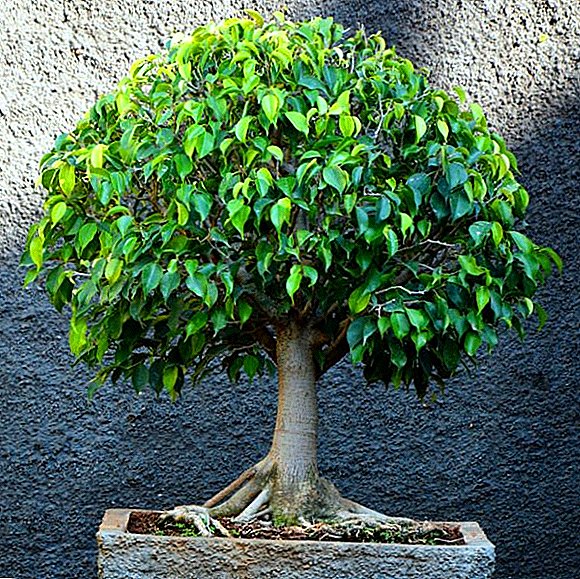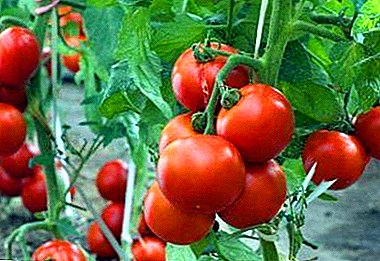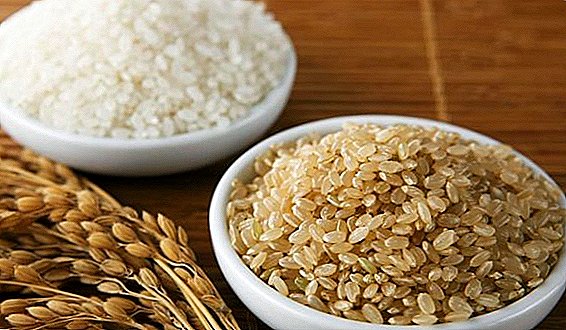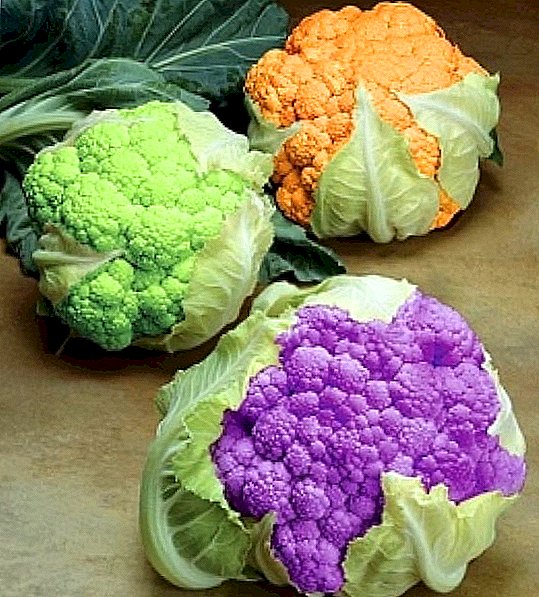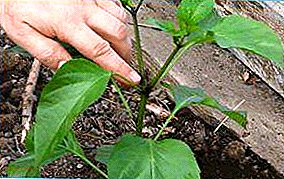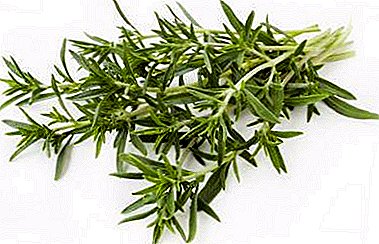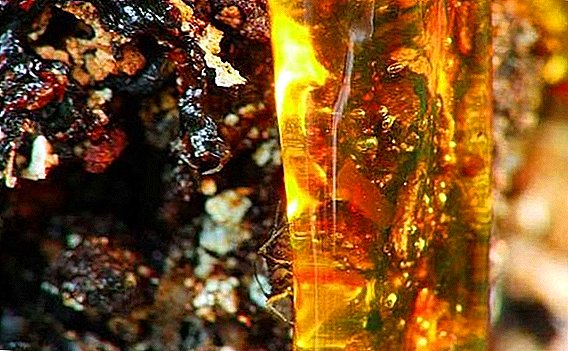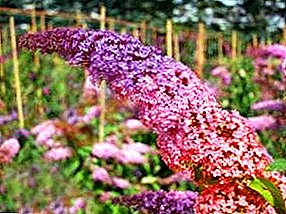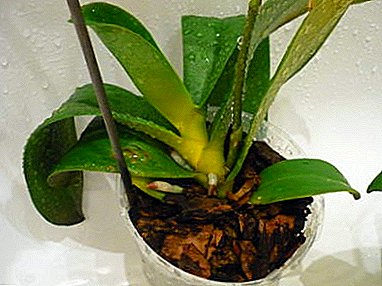
Every orchid owner has at least once encountered in practice the yellowing of leaves, flowers or the trunk. Of course, such processes affect the general condition of the plant. And it is sad that many flower growers do not know what to do in this case. It is impossible to start such an illness, because sooner or later it will reach the roots. The main task of the grower - to prevent the deepening of the disease. And the measures taken on time are a guarantee of the health of the pet.
Process description
Yellowing is the process of color change due to a certain factor. or aggregate. In the yellow part of the plant, all vital processes freeze, green pigment is not produced, respectively, there is a change of color.
The trunk of a monopodial orchid is small. And when it turns yellow, respectively, the yellowness affects the lower leaves, they become a light color. Externally, the yellow stem does not look aesthetically pleasing.
What is the danger to the plant?
Of course, when the symptoms of yellowing of the trunk appear in a very young orchid, then the cause of the old age of the flower disappears by itself. In such a situation, it is better not to delay, and that time to respond to the warning sign.
After all, if you do not provide an ambulance to a sick plant, the consequences are fraught with:
 the yellowness of the whole green mass;
the yellowness of the whole green mass;- drying of foliage, peduncle;
- violation of general development;
- suspension of growth, lack of flowering;
- deterioration of the condition in the background of infectious and viral diseases;
- death of the plant.
Why does the trunk turn yellow?
Orchids are considered demanding plants. After all, any defect in the parameters of the content is immediately noticeable on the appearance of the flower. In order to save the exotic beauty from yellow color in time, one should understand the possible causes of the disease.
Lack of moisture
The minimum amount of water for an orchid is not a problem, but the complete lack of moisture can cause drying. Exotic plants, like any other, it is vital to obtain a volume of fluid that dissolves the nutrients that are in the soil, and saturates the roots. With a lack of liquid, the following symptoms are observed: light roots, yellow leaves and trunk, general wilting of the flower.
Lack of lighting or sunburn
With the arrival of the season of cold and rainy sunlight orchids lack. Ideally, they need a 14-hour light day for a complete photosynthesis process. However, such intensity of light is possible in greenhouses. At home, these parameters are difficult to recreate.
Attention! Without additional lighting, the flowers begin to wither, turn yellow, fall off.
In the summer season, the opposite is true. Bright sun can play a cruel joke. Scorching rays and even at high temperatures, dark spots on the leaves and inflorescences are left on the streets, yellow damaged areas are visible on the trunk. These are so-called thermal burns.
Mechanical damage
Cases of falling, injuring orchids can provoke a yellow color on the trunk. At the same time, the damaged part should be immediately treated with an antiseptic, otherwise the wound can rot. The owner’s inattention can lead not only to yellowing, but also to a fracture of the trunk.
Water glut
Often, problems with indoor plants arise due to improper mode of watering. Excess moisture for orchids is an extremely undesirable phenomenon. Wet soil - a suitable environment for the reproduction of pathogenic microorganisms, the development of rotten processes. The liquid in the pot leads to disruption of the plant nutritional function. Also blocked the access of air to the roots.
Diseases
 As a result of improperly organized irrigation systems and non-compliance with the conditions of quarantine, orchids have fungal and bacterial diseases. In this case, the yellowness of the trunk and leaves is a minor symptom of the appearance of infection. In addition, there are brown-red spots on the leaves, dark areas of the root system, wounds on the trunk. Such illnesses cause serious damage to the plant. The treatment is carried out with systemic fungicides.
As a result of improperly organized irrigation systems and non-compliance with the conditions of quarantine, orchids have fungal and bacterial diseases. In this case, the yellowness of the trunk and leaves is a minor symptom of the appearance of infection. In addition, there are brown-red spots on the leaves, dark areas of the root system, wounds on the trunk. Such illnesses cause serious damage to the plant. The treatment is carried out with systemic fungicides.
When is the process considered natural?
The yellowness of the trunk, one way or another, is associated with the leaves, and is of a natural nature. The natural process of leaf death occurs between the ages of one and five years. In this case, the aging of other parts of the plant: the trunk, the roots occur more slowly, and not so noticeably. There is nothing terrible in natural yellowing, just the plant has exhausted its strength, its life potential has been exhausted.
If the color of the growing point changes
Monopodial orchids have one stem that grows exclusively vertically. The upper part is called the growth point, it is from here that the young leaves appear. The resulting yellowing indicates deviations from the norm, due to violation of the parameters of the microclimate or poor-quality care.
It is possible that a yellow point of growth may result from infection with a fungal infection. With a significant deformation of the growth point, the upper part stops growing. Therefore, some growers believe that the plant under the circumstances can not survive.
In fact, exotic can be brought back to life, but with probability, of course, not 100%.
Attention! Without an active middle, an orchid is at risk of contracting infectious diseases.
And if the plant has enough strength to resist diseases, then in the future it will fully develop. An orchid is capable of releasing a lateral sprout on a stem or peduncle, thus, giving birth to offspring.
Step-by-step instruction: what to do if the trunk turned yellow
If, unexpectedly, the color of the stem and the state of the plant as a whole began to change, then this is unambiguously related to one of the above reasons. It is not necessary to wait long for improvement, but it would be good to start treatment immediately. What to do if the orchid has bloomed, and the trunk began to turn yellow, starting from the top and moving down?
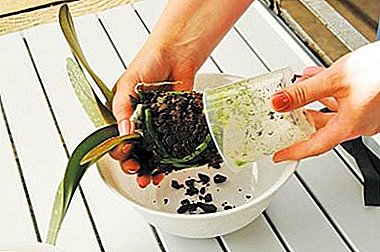 It is necessary to make a visual inspection of the plant and determine the causes of unhealthy species.
It is necessary to make a visual inspection of the plant and determine the causes of unhealthy species.- If all the fault is the wrong conditions, then they should be made as comfortable as possible for a sick orchid.
- Control the mode of moistening and water quality.
- After watering, the liquid should not remain in the leaf axils.
If the measures taken have not yielded positive results, then it is necessary to approach the problem more radically.
- Prepare a sharp instrument in advance.
- Remove any damaged tissue.
- Place the slices treated with an antiseptic solution.
If the symptoms continue to be added, that is, the leaves turn yellow and fall, there is no flowering, perhaps rotting or fungal diseases.
- Treat the soil and the plant with a 0.2% solution of the Fundazole or Topsin preparation.
- Pour the chemical preparation directly into the flower wound.
- Procedure to perform at least 3 times with an interval of 10-12 days.
- During treatment regularly inspect the flower for rot.
- It is advisable to treat the kidneys on the peduncle with cytokinin hormone paste to stimulate the appearance of children.
Prevention
We have already answered the question why the trunk may turn yellow and what to do in this case. Now let's talk about prevention. Not to worry about the health of an exotic beauty, Care guidelines should be followed.
- Lighting create scattered, scorching rays of the sun to shade. In the offseason provide backlit.
- Maintain a comfortable temperature not higher than + 25 ºС, and humidity within 60%.
- Spray every day, several times a day. Ensure that the water does not remain on the leaves for a long time.
- Do not forget to ventilate the room.
- Once in 3 years to update the soil.
- Moisturize moderately, do not allow the bay. Enough 1 time in 5-7 days. Water to take clean, without impurities.
- Perform timely feeding and protection from pests.
By following the basic care guidelines, you will provide the required content parameters for active growth and lush orchid blooms. In addition, the indoor plant will have a strong immunity, and in the future, in general, forget about the diseases and health problems of your beauty.


 the yellowness of the whole green mass;
the yellowness of the whole green mass; It is necessary to make a visual inspection of the plant and determine the causes of unhealthy species.
It is necessary to make a visual inspection of the plant and determine the causes of unhealthy species.